#santaferailway
Text
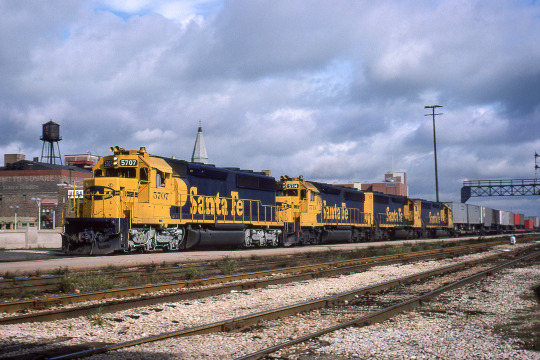
Westbound at Joliet
One more early image, taken the same day as my previous post...
The train pictured may be the famed Super-C, a hot TOFC train that ran between Chicago and the west coast. It's westbound near the tower at Joliet once again. The Santa Fe ran parallel to the GM&O at this spot; the train will cross the Rock Island within seconds.
The lead locomotive is an SD45-2 built in May of 1974, so only a little over a year old. It has a 20-cylinder prime mover that produced 3600 horsepower.
One photograph by Richard Koenig; taken September 20th 1975.
#railroadhistory#railwayhistory#filmphotography#jolietillinois#jolietil#joliet#santaferailway#chicagorockisland&pacific#rockisland#gulfmobile&ohio#cri&p#santafe#atsf#gm&o
29 notes
·
View notes
Photo

Happy #nationaltrainday, everyone!!! #digitalart #DigitalArtist #digitalillustration #digitalartist #artistsoninstagram #artistonfacebook #trains #steamlocomotive #diesellocomotive #amtrak #Amtrak50 #santaferailway #santaferailroad #carolwoodpacificrailroad https://www.instagram.com/p/COVsQCiHe1W/?igshid=vv90wsaiw1yy
#nationaltrainday#digitalart#digitalartist#digitalillustration#artistsoninstagram#artistonfacebook#trains#steamlocomotive#diesellocomotive#amtrak#amtrak50#santaferailway#santaferailroad#carolwoodpacificrailroad
1 note
·
View note
Video
Santa Fe back in the day... by santafetrainman
#ATSF#AtchisonTopeka&SantaFeRailway#SantaFe#AtchisonTopeka&SantaFe#California#SantaFeRailroad#SantaFeRailway#EMD#F-units#train#trains#trainspotting#track#tracks#RR#rail#rails#railroad#railroads#railway#railways#locomotive#diesel locomotive#AT&SF#santa fe#old cars#b&w photography#vintage#retro
75 notes
·
View notes
Photo
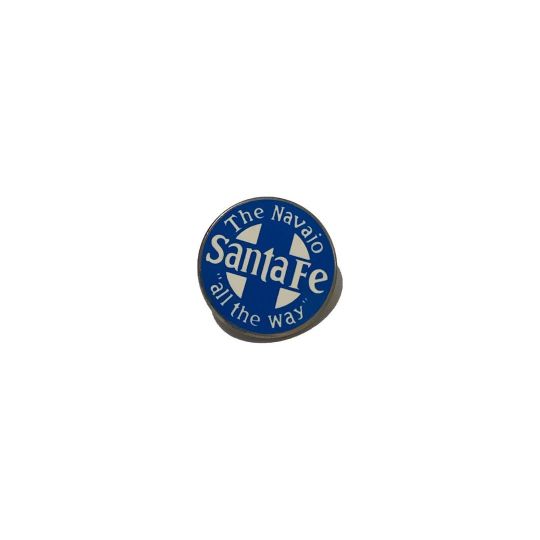
1970’s Santa Fe Railways Pin • The Navajo was a passenger train that traveled from Chicago to Los Angeles to San Francisco • In 1937 a sleeper-lounge-observation car named The Navajo was added to the Super Chief. • #vintagepins #santaferailway #vintagesantafe #superchief (at Downtown Santa Fe) https://www.instagram.com/p/CEKzlrBlbpJ/?igshid=nu54mq209sl2
0 notes
Photo
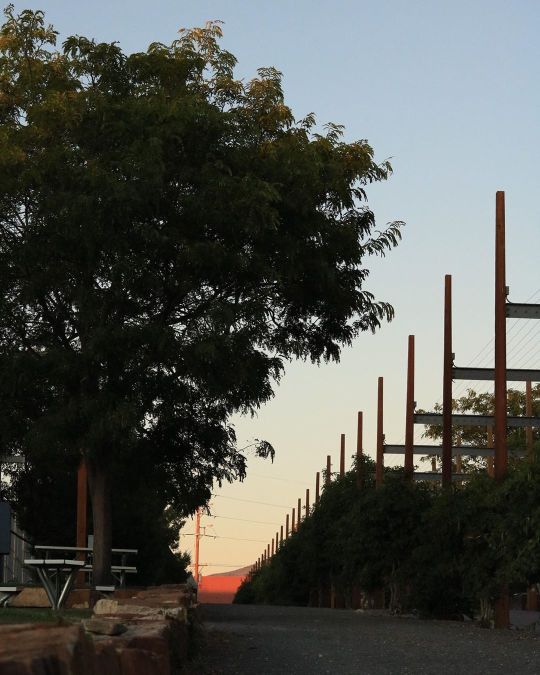
“Quiet evening” . . . . . #santafe#santafenewmexico#santaferailway#santaferailyard#newnexico#canon#canonphotography#canonphoto#canonphotos#canonrebelt7#shotoncanon (at Santa Fe, New Mexico) https://www.instagram.com/p/B45NGEFBrAO/?igshid=puvhvx83er7s
#santafe#santafenewmexico#santaferailway#santaferailyard#newnexico#canon#canonphotography#canonphoto#canonphotos#canonrebelt7#shotoncanon
0 notes
Text

Landmark
This is an eastbound Amtrak Southwest Chief splitting the signals at Levy, New Mexico. These semaphores have been coming down incrementally over the last couple of years which has caused the signals to be some of the most photographed railroad subjects in recent memory.
This view, pointing my camera compass southward, provides a great view of Wagon Mound—an important landmark for those traveling the Santa Fe Trail prior to the coming of the railroad.
One image by Richard Koenig; taken April 28th 2023.
#atchisontopeka&santaferailway#atchisontopeka&santafe#santaferailway#railroadhistory#railwayhistory#amtrak#southwestchief#levynewmexico#levynm#levy#landofenchantment#atsf#bnsf
29 notes
·
View notes
Photo
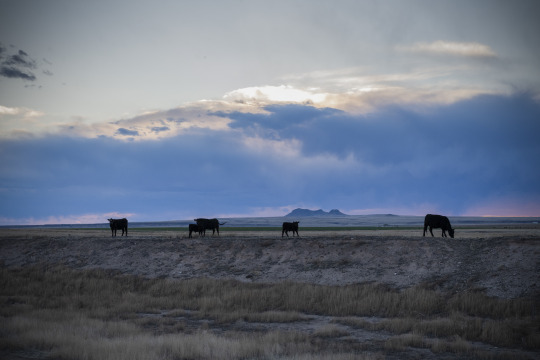
Cow on the ROW
While exploring the high plains near the Panhandles, I came upon this scene—cows grazing on an abandoned line of the Santa Fe, between Boise City, Oklahoma, and Clayton, New Mexico.
As I’ve written in other posts, the little set of peaks one sees here is called Rabbit Ears Mountain and was a landmark for the Cimarron Cutoff of the Santa Fe Trail.
One image by Richard Koenig; taken April 27th 2023.
#railroadhistory#railwayhistory#rabbitearsmountain#atsf#santaferailway#boisecityok#boisecity#claytonnewmexico#claytonnm#clayton#santafetrail#cimarroncutoff
41 notes
·
View notes
Photo
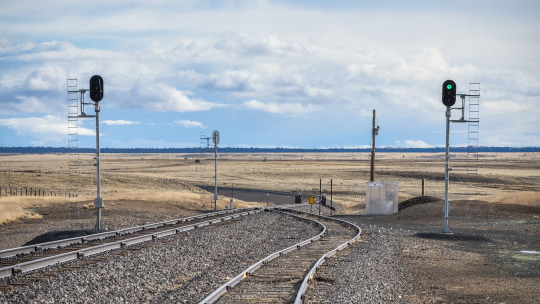


Colmor, Sans Train
Returning to my earlier posting from Colmor, New Mexico—here are a few shots sans train. How I love this place. [If you missed the one with Amtrak’s Southwest Chief, you can see it here.]
The first photograph shows the relatively new tricolor lights that have supplanted the semaphores at the west end. The second image shows the older type still standing at the east end, and the final image shows the landscape in between.
Three images by Richard Koenig; taken April 26th 2023.
#railroadhistory#railwayhistory#colmornewmexico#colmornm#colmor#ghosttown#santaferailway#atsf#semaphore
21 notes
·
View notes
Photo
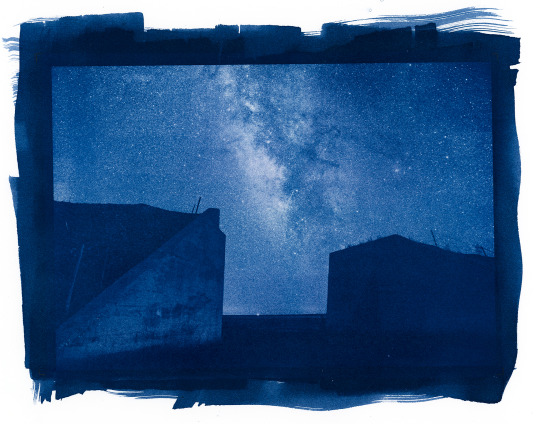
Colmor Cutoff
While in northeast portion of New Mexico, I thought I’d check out a railroad that never quite got completely built: Santa Fe’s Colmor Cutoff. These bridge abutments are some hard evidence that it existed, found in Mt. Dora, near Clayton.
As part of its sprawling system, the ATSF began a line between Boise City, Texas, and Colmor, New Mexico, practically mirroring the Cimarron Route of the precursor Santa Fe Trail.This line would be abandoned just 35 miles short of its completion (Colmor), though trains did run on this section prior to being shut down. A route further south would be favored over this one—the Belen Cutoff.
Go to this link if you're interested in more information on this line.
This location, Clayton, New Mexico, is adjacent to an area of truly dark sky, so I had planned to shoot the Milky Way; it made sense to combine my two interests.
Process: cyanotype on Stonehenge
Image size: 5.5 x 8 inches; paper size: 8 x 10 inches
Capture made prior to dawn on April 27th 2023
#railroadhistory#railwayhistory#santaferailway#atsf#cyanotypeprocess#cyanotypeprint#alternativeprocessphotography#alternativeprocess#landofenchantment#newmexico
12 notes
·
View notes
Photo

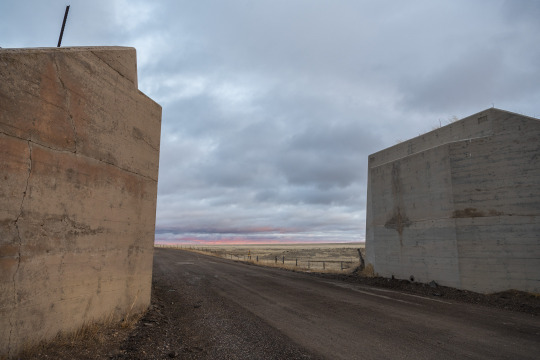
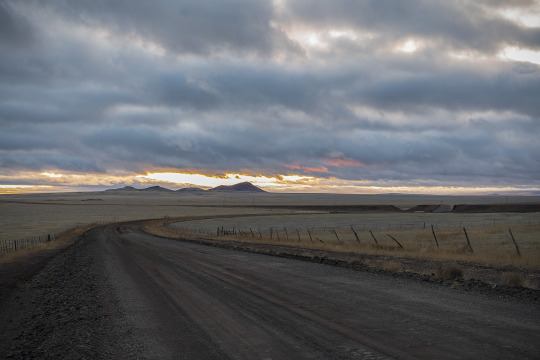
Colmor Cutoff, Part One
While in northeast portion of New Mexico, I thought I’d check out a railroad that never quite got completely built: Santa Fe’s Colmor Cutoff. These pictures were taken in Mt. Dora, near Clayton.
As part of its sprawling system, the ATSF began a line between Boise City, Oklahoma, and Colmor, New Mexico, practically mirroring the Cimarron Route of the precursor Santa Fe Trail.
This line would be abandoned just 35 miles short of its completion (Colmor), though trains did run on this section prior to being shut down. A route further south would be favored over this one—the Belen Cutoff. Go here for more information on the line above.
Three images by Richard Koenig; taken April 26th 2023.
#railroadhistory#railwayhistory#santaferailway#atsf#santafe#atchisontopekaandsantafe#colmornm#colmor#boisecity#landofenchantment#newmexico
15 notes
·
View notes
Photo
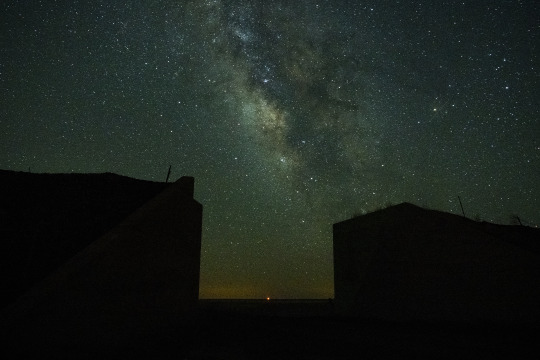
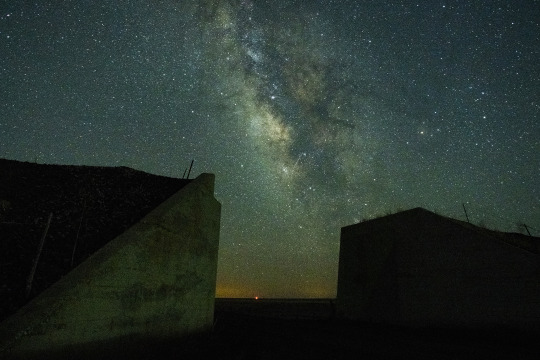
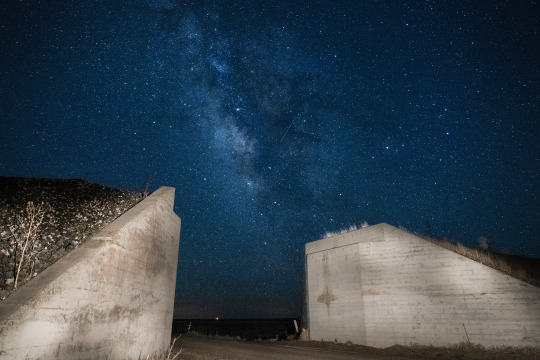

Colmor Cutoff, Part Two
Following my previous post, here are some night shots of the remaining bridge abutments of an abandoned Santa Fe rail line near Mt. Dora, New Mexico. I got up prior to four AM as I knew first light would happen at five and sunrise at six. It was only a twenty minute drive from my hotel in Clayton.
Upon the first hint of light in the east, evidence of stars, and the galactic core of the Milky Way, began to fade. This is logical, of course, but in the heat of the moment, frantically trying different compositions and exposures, experimenting with light painting, I did not really notice. The final image here shows the sky with early twilight present and quickly brightening.
Go here for my previous post on the history of the line—and a link to a webpage that helped me understand it.
Four images by Richard Koenig; taken April 27th 2023.
#railroadhistory#railwayhistory#santaferailway#atsf#santafe#atchisontopeka&santafe#atchisontopekaandstanafe#colmornm#colmor#claytonnm#clayton#newmexico#landofenchantment
16 notes
·
View notes
Text
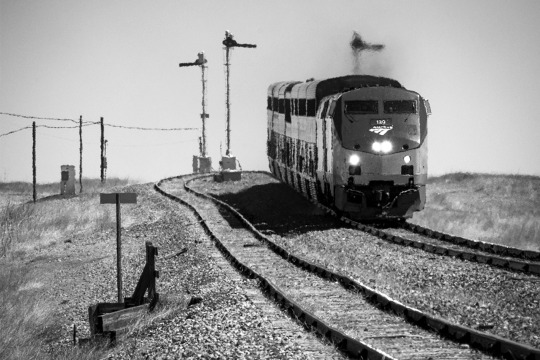
Tele-View
A westbound Amtrak Southwest Chief splits the semaphores and speeds down hill at the east end of Colmor, New Mexico.
One image by Richard Koenig; taken April 29th 2023.
#atchisontopeka&santaferailway#atchisontopeka&santafe#landofenchantment#railroadhistory#railwayhistory#amtrak#southwestchief#santafe#atsf#semaphore#newmexico
23 notes
·
View notes
Photo
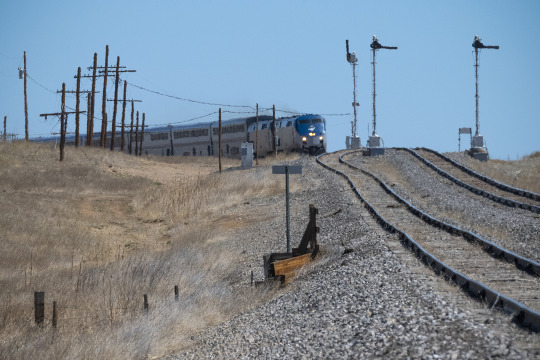

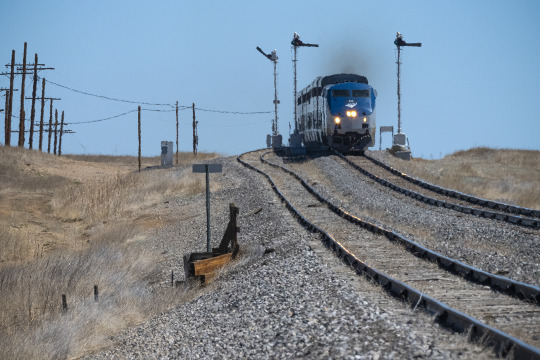
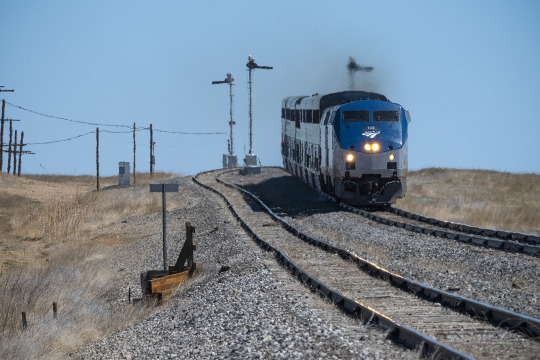
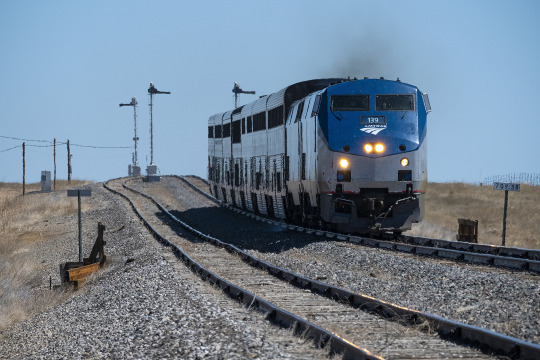
Semaphores’ Last Stand (3 of 3)
Finally, the last of three posts on the ancient semaphores of the Santa Fe. Once again we see an eastbound Amtrak Southwest Chief rolling between the distinctive signals, this time at the ghost town of Colmor, New Mexico. And once again I’ll cut and paste some history on the content here...
These three signals are some of the last semaphores (eleven, that I know of) still operating in the United States. They are on the original line of the Atchison, Topeka & Santa Fe Railway in northeast New Mexico.
The reason these ancient signals are still here is due to the Belen Cutoff of the early 19th century. It became the preferred route for nearly all of the traffic on the Santa Fe and successor BNSF. The only train operating on the line currently (beside work trains for maintenance) is this one (each way per day), and so the railroad has been slow to put money into replacements.
However—the semaphores have been coming down incrementally over the last couple of years. This has caused the signals to be some of the most photographed railroad subjects in recent memory (with UP 4014 being the most in my estimation).
This was my final train on this historic line this trip—I hope to make it back out before the signals are extinct entirely.
Five images by Richard Koenig: taken April 29th 2023.
#railroadhistory#railwayhistory#colmornewmexico#colmornm#colmor#amtrak#southwestchief#landofenchantment#atsf#bnsf#atchisontopeka&santaferailway#atchisontopeka&santafe
25 notes
·
View notes
Photo
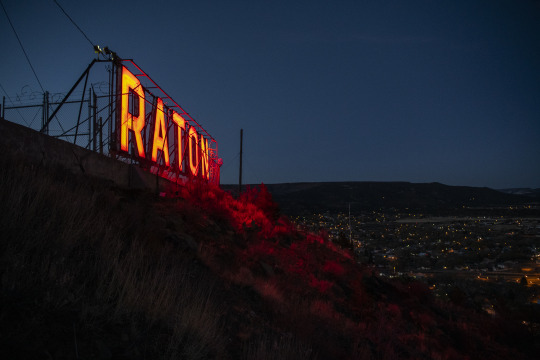
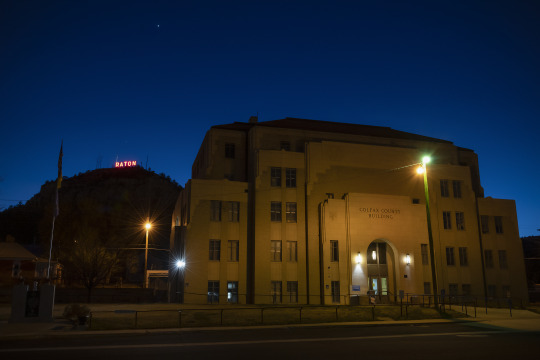

Raton
This seems to be a thing out west—towns erected lighted signs over their burgs, perhaps for PR reasons. I made it up to the Trinidad sign a couple of years ago, and just did the same at Raton recently.
Of course, for those of us with an interest in railroads, the word “Raton” carries with it a rich history. I’ll quote myself in an article I wrote in the journal Railroad History, number 221...
Moving south from Trinidad, located in the relatively new state of Colorado, and roughly following the Mountain Route of the Santa Fe Trail, the railroad first crawled its way up and over Raton Pass in 1878, supplanting a wagon toll road carved out by Richens Lacey “‘Uncle Dick” Wootton. It then ran down the other side of the pass to Willow Springs, later called Raton, New Mexico.
The pass for this original route of the Santa Fe turned out to be a challenging one due to a steep grade and tight curvature. But it’s still in use—barely. See my other recent posts on the Santa Fe semaphores for more on this line.
Three images by Richard Koenig; taken April 28th 2023.
#ratonnewmexico#ratonnm#raton#newmexico#landofenchantment#atchisontopeka&santaferailway#atchisontopeka&santafe#atsf#uncledickwootton
29 notes
·
View notes
Photo
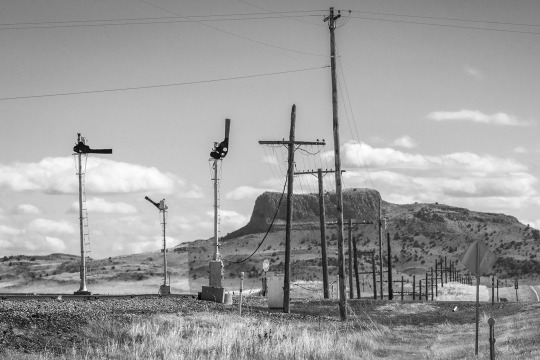
Levy
Just one of my favorite spots on earth—Levy, New Mexico. One image by Richard Koenig; taken April 28th 2023.
#landofenchantment#levynewmexico#levynm#levy#semaphores#atchisontopeka&santaferailway#atchicontopeka&santafe#atsf#bnsf
29 notes
·
View notes
Photo
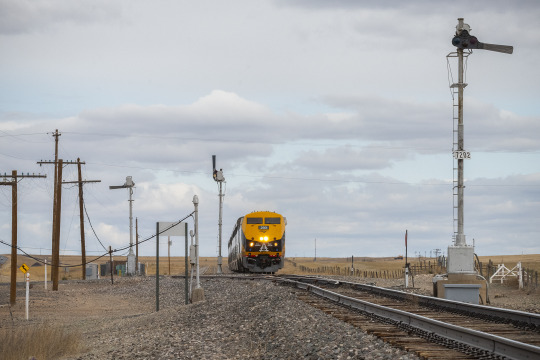
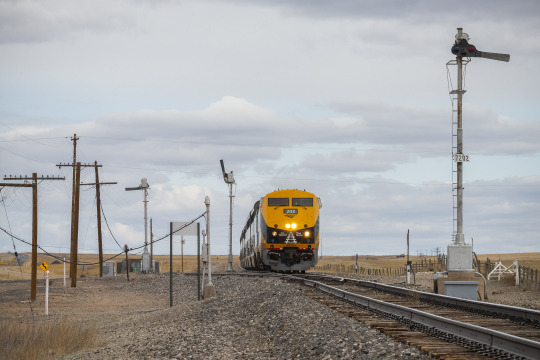
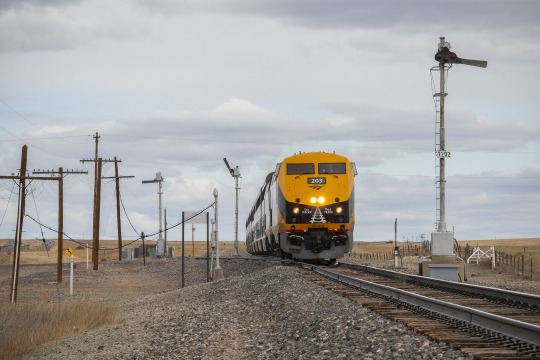
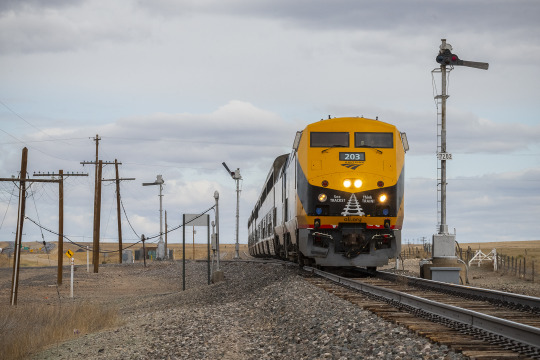
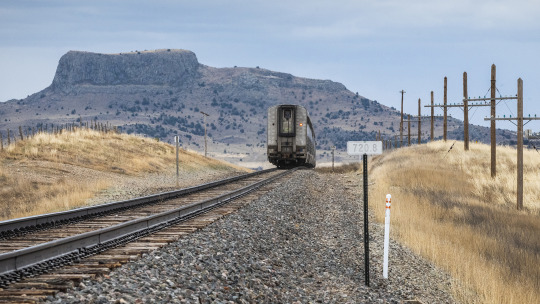
Semaphores’ Last Stand (1 of 3)
This is a westbound Amtrak Southwest Chief ripping through Levy, New Mexico, at the 79 MPH limit. These three signals are some of the last semaphores (eleven, that I know of) still operating in the United States.
We’re on the original line of the Atchison, Topeka & Santa Fe Railway in northeast New Mexico. The reason these ancient signals are still here is due to the Belen Cutoff of the early 19th century. It became the preferred route for nearly all of the traffic on the Santa Fe and successor BNSF. The only train operating on the line currently (beside work trains for maintenance) is this one (each way per day), and so the railroad has been slow to put money into replacements.
However—the semaphores have been coming down incrementally over the last couple of years. This has caused the signals to be some of the most photographed railroad subjects in recent memory (with UP 4014 being the most in my estimation).
As chance would have it, the locomotive here is a special one: painted up for Operation Lifesaver. It encourages people to be very careful and alert around road crossings where a speeding train can do immense damage to one’s automobile, life, and limb. “See tracks, think train.” The wonderful geological feature in the going away shot is Wagon Mound which was a prominent landmark for pioneers traveling on the Santa Fe Train prior to the coming of the railroad.
Five images by Richard Koenig: taken April 28th 2023.
#railroadhistory#railwayhistory#levynewmexico#levynm#levy#landofenchantment#atchisontopeka&santaferailway#atsf#amtrak#southwestchief#operationlifesaver
25 notes
·
View notes